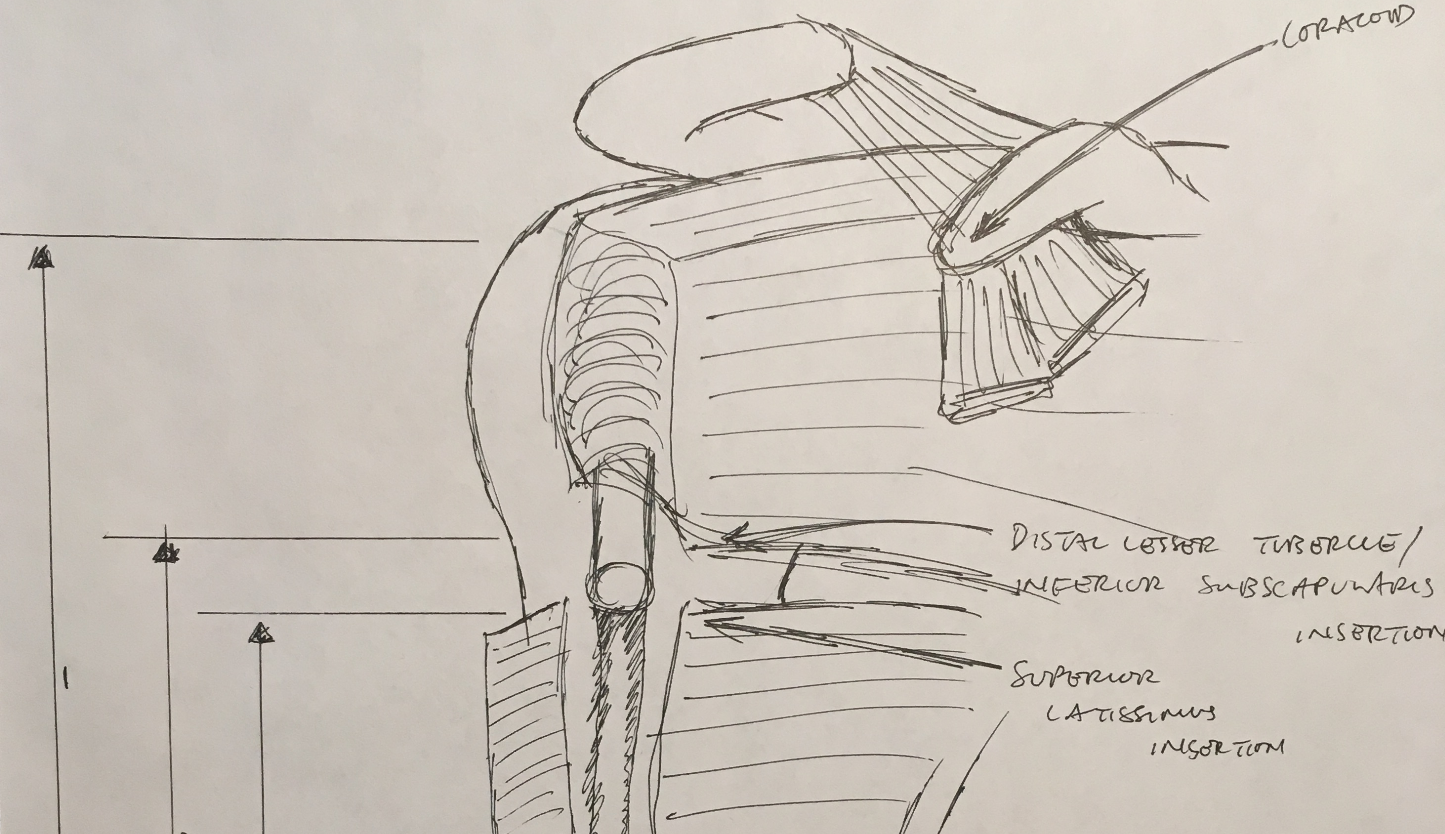Authors
Michael C. Fu, MD, MHS, Michael D. Hendel, MD, PhD, Xiang Chen, MS, Russell F. Warren, MD, David M. Dines, MD, Lawrence V. Gulotta, MD
Journal
Journal of Shoulder and Elbow Surgery, 2017-12-01, Volume 26, Issue 12, Pages 2173-2176
Abstract
Background
Radial nerve injury is a rare but clinically significant complication of revision shoulder arthroplasty and fixation of native and periprosthetic proximal humeral fractures. Understanding of the anatomic relationship between the radial nerve as it enters the humeral spiral groove and anterior shoulder landmarks in a deltopectoral approach is necessary to avoid iatrogenic radial nerve injury.
Methods
Eight forequarter cadaveric specimens were dissected through a deltopectoral approach. Distances between the radial nerve entry into the proximal spiral groove and the coracoid process, distal lesser tuberosity/inferior subscapularis insertion, superior latissimus insertion, and inferior latissimus insertion were measured. Means, standard deviations, and ranges were determined for each distance.
Results
The radial nerve entry into the proximal spiral groove averaged 133.1 mm (range, 110.3-153.0 mm) from the coracoid process, 101.9 mm (range, 76.5-124.3 mm) from the distal lesser tuberosity/inferior subscapularis insertion, 81.0 mm (range, 63.4-101.5 mm) from the superior latissimus insertion, and 39.6 mm (range, 25.5-55.4 mm) from the inferior latissimus insertion. The proximal spiral groove was distal to the inferior latissimus insertion in all specimens.
Conclusion
The risk of iatrogenic injury to the radial nerve at the spiral groove may be minimized through proper identification and protection or avoidance of circumferential fixation. However, if encircling fixation with cerclage cables is necessary, instrumentation proximal to the inferior edge of the latissimus dorsi insertion may reduce the risk of radial nerve injury.
About the Author
Dr. Michael Fu is an orthopedic surgeon and shoulder specialist at the Hospital for Special Surgery (HSS), the best hospital for orthopedics as ranked by U.S. News & World Report. Dr. Fu treats the entire spectrum of shoulder conditions, including rotator cuff tears, shoulder instability, and shoulder arthritis. Dr. Fu was educated at Columbia University and Yale School of Medicine, followed by orthopedic surgery residency at HSS and sports medicine & shoulder surgery fellowship at Rush University Medical Center in Chicago. He has been a team physician for the Chicago Bulls, Chicago White Sox, DePaul University, and NYC’s PSAL.
Disclaimer: All materials presented on this website are the opinions of Dr. Michael Fu and any guest writers, and should not be construed as medical advice. Each patient’s specific condition is different, and a comprehensive medical assessment requires a full medical history, physical exam, and review of diagnostic imaging. If you would like to seek the opinion of Dr. Michael Fu for your specific case, we recommend contacting our office to make an appointment.

